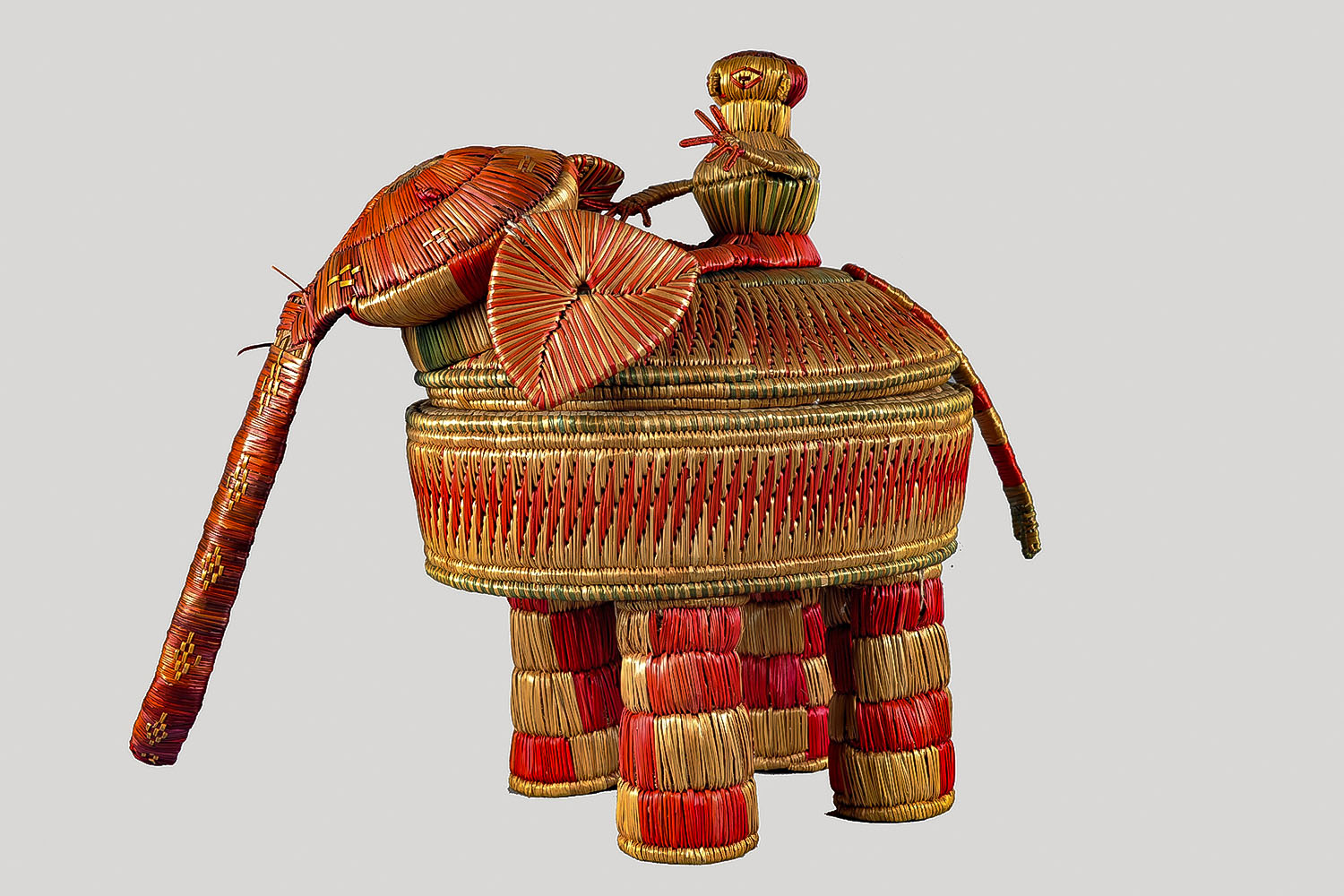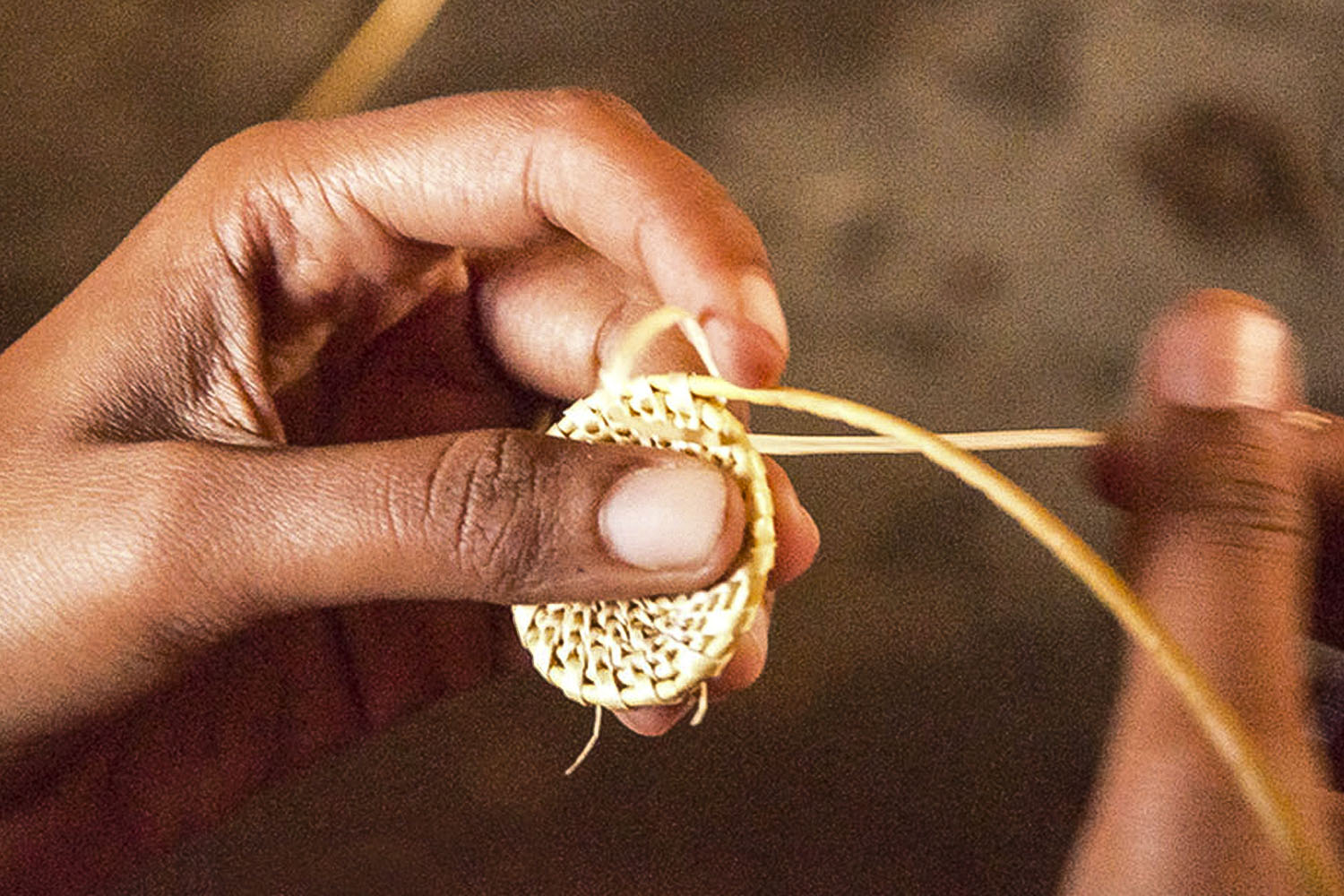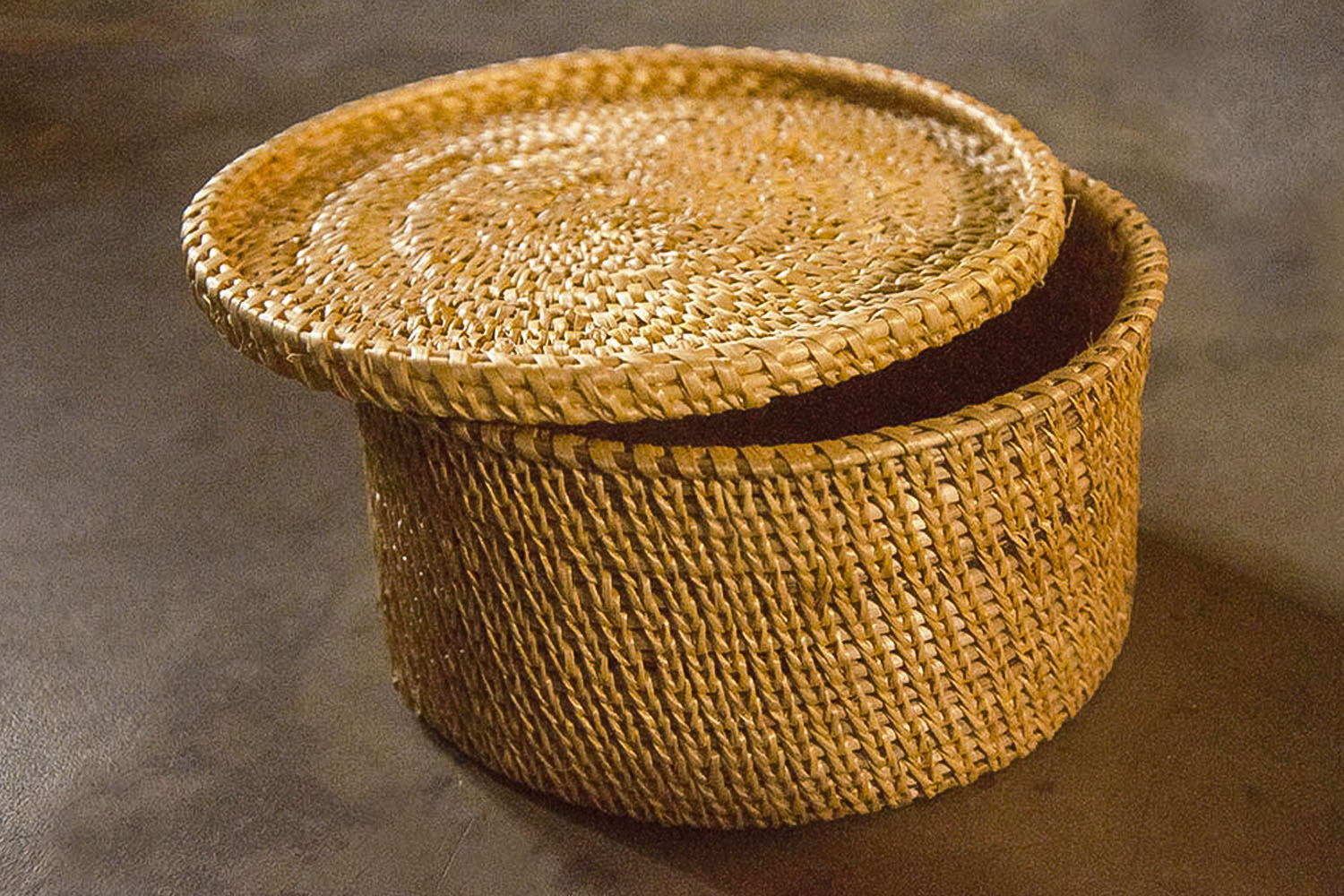ARTICLE
Golden Grass Craft
A yellow coloured grass that grows in the marshy areas of northeastern Odisha, golden grass (Vetiveria zizanioides) is used by women in the region to weave a range of utilitarian and decorative items that are used by communities across the state. The grass, which is referred to locally as bena in its natural form, is named for the golden lustre it gains upon drying, at which point the straw and the products made from it are called sikki or kaincha. Golden grass craft items are sustainable and biodegradable, with traditional products being dalas (open baskets) and pedis (covered baskets), which are made in a range of sizes and used for storing food, tools, jewellery and flowers. More recently, golden grass artisans have expanded their output to include products such as vases, table mats, hats, jewellery and bags for a modern market.
Golden grass is an inflorescent plant that grows to a height of five to six feet. It is typically foraged as it grows abundantly in the Odia marshes, but some artisans also cultivate the grass in small quantities to supplement their production of kaincha goods. The grass is cut from the base and the flowering parts are removed from the stalk. After harvesting, women use their teeth to split the stalk of the grass into two strands along its length, after which, the stalks are left to dry. The resultant straw is the only material used in the craft, and it is coloured using green, red and magenta dye which are applied according to the planned design. Tools including needles, measuring tape and scissors are generally used to fashion products out of the straw. The artisans use needles to coil the straw when knotting and weaving it in concentric bands. Colour is used sparingly in most kaincha designs, with the natural golden sheen being the most prominent feature.
Kaincha has traditionally been practised in households, but the craft has more recently entered urban markets, with the support of self-help groups and local government interventions. As a low-cost craft, golden grass weaving is seen as a reliable source of income for the women engaged in it. The SANKALP Kendrapara Project conducts workshops for women to introduce them to new designs and techniques to implement in the craft, and help them reach new customers. Kaincha crafts are now sold using social media and in handicraft emporiums across the country. In 2022, the Odisha State Cooperative Handicrafts Corporation applied for a Geographical Indication for the craft, and at the time of writing the application is under review.
Bibliography
Our website is currently undergoing maintenance and re-design, due to which we have had to take down some of our bibliographies. While these will be re-published shortly, you can request references for specific articles by writing to hellomapacademy@map-india.org.









